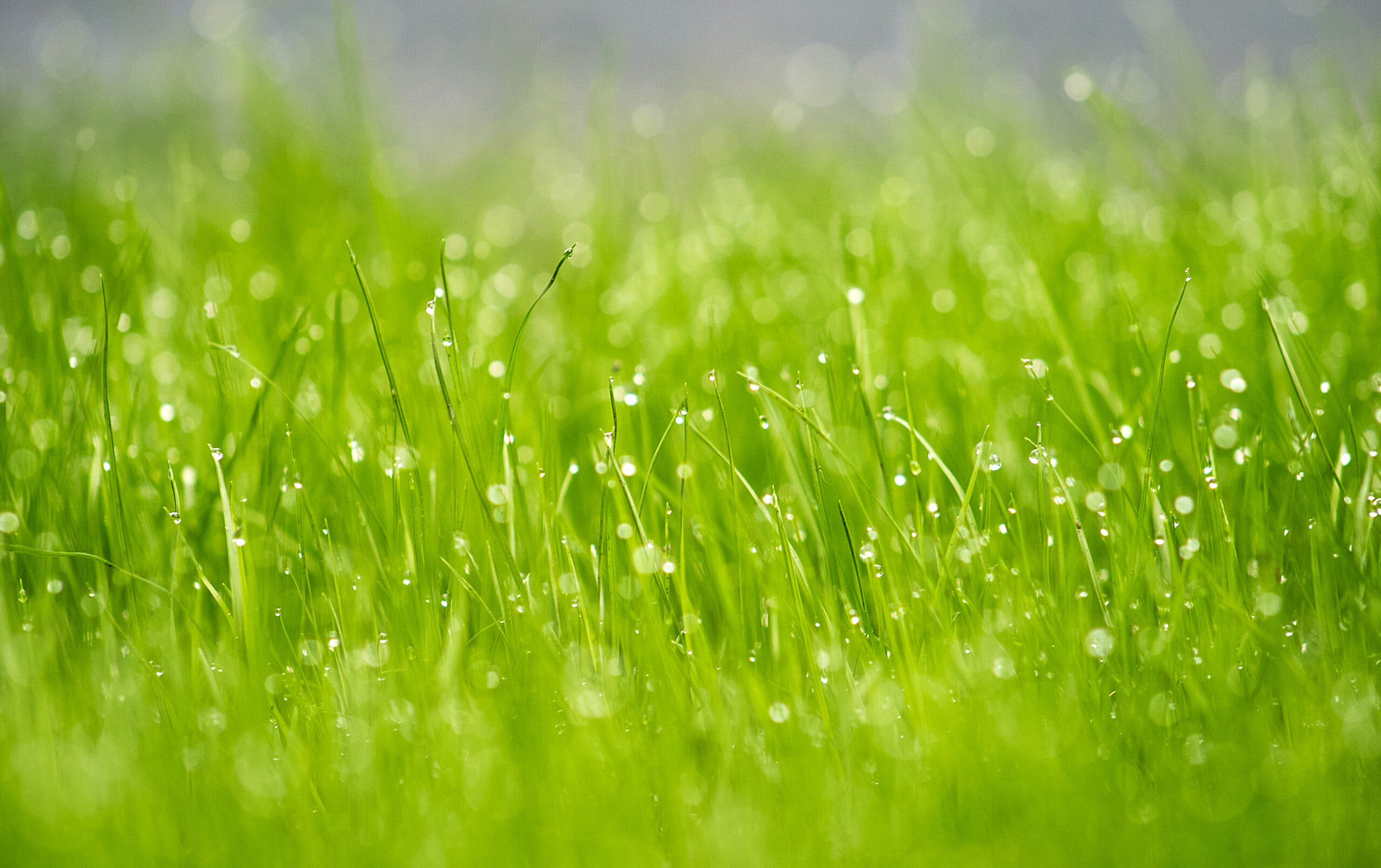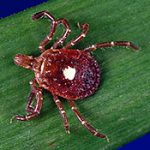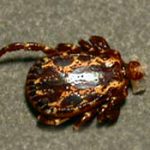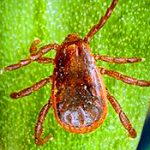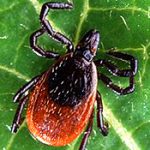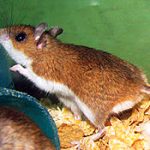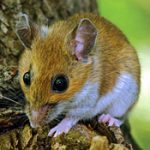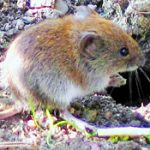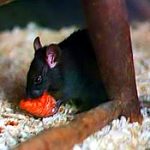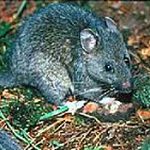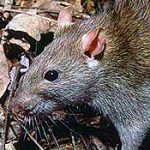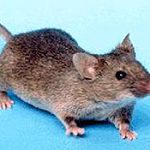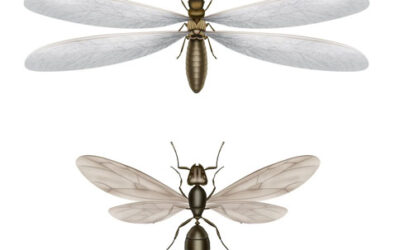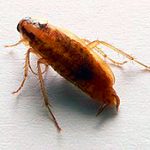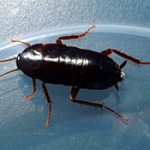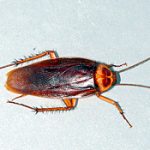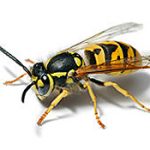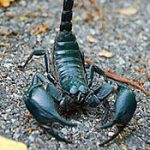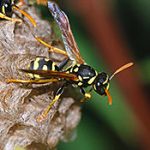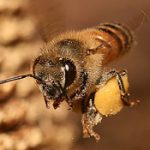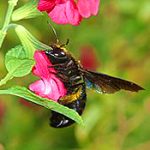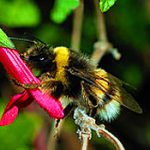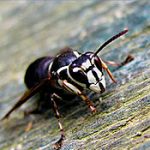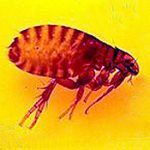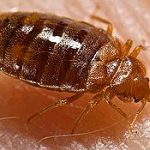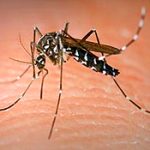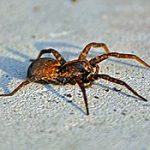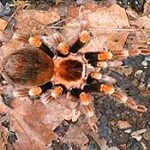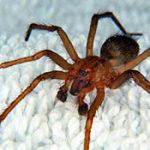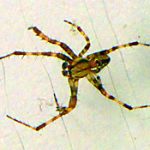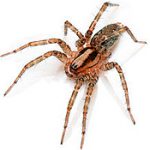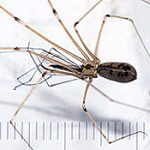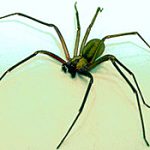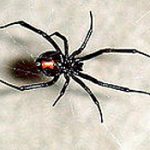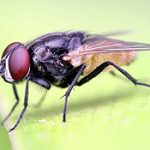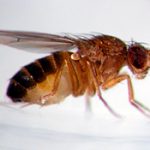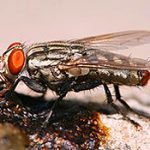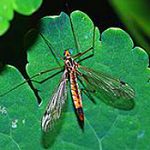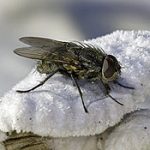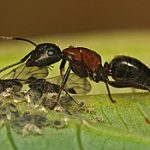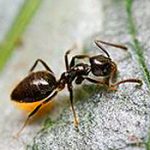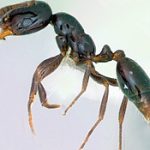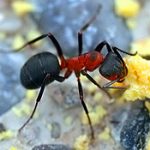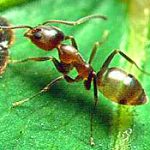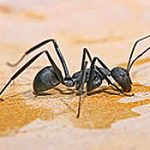Lone Star Tick
The Lone Star Tick is very widespread in the United States ranging from Texas to Iowa in the Midwest and east to the coast where it can be found as far north as Maine. It is most common in wooded areas, particularly in forests with thick underbrush. Like all ticks, it...
American Dog Tick
The American dog tick, is a species of tick that is known to carry bacteria responsible for several diseases in humans, including Rocky Mountain spotted fever and tularemia (Francisella tularensis). It is one of the most well-known of hard ticks. D. variabilis is not...
Brown Dog Tick
BROWN DOG TICK The brown dog tick, Rhipicephalus sanguineus, is a species of tick which is found world-wide, but more commonly in warmer climates. This species is unusual among ticks in that its entire life cycle can be completed indoors. Rhipicephalus sanguineus will...
Deer Tick / Black-Legged Tick
Ixodes scapularis is commonly known as the deer tick or blacklegged tick and in some parts of the USA as the bear tick. It is a hard-bodied tick of the eastern and northern Midwestern United States. It is a vector for several diseases of animals and humans (Lyme...
Deer Mouse
Peromyscus maniculatus is a rodent native to North America. It is most commonly called the Deer Mouse, although that name is common to most species of Peromyscus and is fairly widespread across the continent, with the major exception being the southeast United States...
White-Footed Mouse
White-footed Mouse (Peromyscus leucopus) is a rodent native to North America. It ranges from the Ontario, Quebec, Labrador and the Maritime Provinces (excluding island of Newfoundland) to the southwest USA and Mexico. It is also known as the Woodmouse, particularly in...
Vole
The Meadow Vole (Microtus pennsylvanicus), sometimes called the Field Mouse or Meadow Mouse, is a small North American vole found across Canada, Alaska and the northern United States. Its range extends further south along the Atlantic coast. One subspecies, the...
Roof Rat / Black Rat
A typical adult black rat is 12.75-18.25 in (32.4-46.4 cm) long, including a 6.5-10 in (17-25 cm) tail, and weighs 4-12 oz (110-340 g). Despite its name, the black rat exhibits several colour forms. It is usually black to light brown in colour with a lighter...
Pack Rat
A packrat, also called a woodrat, can be any of the species in the rodent genus Neotoma. Packrats have a rat-like appearance, with long tails, large ears and large black eyes. Compared to deer mice, harvest mice, and grasshopper mice packrats are noticeably larger and...
Norway Rat
The brown rat, common rat, sewer rat, Hanover rat, Norway rat, Brown Norway rat, Norwegian rat, or wharf rat (Rattus norvegicus) is one of the best known and most common rats. It is a brown or grey rodent with a body up to 25 cm (10 in) long, and a similar tail...
House Mouse
The House Mouse (Mus musculus) is one of the most numerous species of the genus Mus commonly termed a mouse. It is a small mammal and a rodent. Laboratory mice belong to strains of House Mice and are some of the most important model organisms in biology and medicine;...
Formosan Subterranean Termite / Subterranean Termite
Termites live in colonies that, at maturity, number from several hundred to several million individuals. Colonies use a decentralised, self-organised systems of activity guided by swarm intelligence to exploit food sources and environments that could not be available...
German Cockroach
The German cockroach, Croton bug or Steam fly (Blattella germanica) is a small species of cockroach, measuring about 1.3 cm (0.51 in) to 1.6 cm (0.63 in) long. It can be tan through brown to almost black, and has two dark parallel streaks running from the head to the...
Oriental Cockroach
The oriental cockroach (also known as waterbug) is a large species of cockroach, measuring about 1 in (2.5 cm) in length at maturity. It is dark brown to black in colour and has a glossy body. The female Oriental cockroach has a somewhat different appearance to the...
American Cockroach
The American cockroach (Periplaneta americana), also known as the Palmetto Bug or Waterbug, particularly in the southern United States, is the largest species of common cockroach, and often considered a pest. It is native to the Southern United States, and common in...
Yellow Jacket
Yellow jacket or yellow-jacket is the common name in North America for predatory wasps of the genera Vespula and Dolichovespula. Members of these genera are known simply as “wasps” in other English-speaking countries. Most of these are black-and-yellow; some are...
Scorpion
Scorpions are predatory arthropod animals of the order Scorpiones within the class Arachnida. There are about 2,000 species of scorpions, found widely distributed south of about 49° N, except New Zealand and Antarctica. The northernmost part of the world where...
Paper Wasp
Paper wasps are 1/4 to 1 inch (1.9 to 2.5 cm)-long wasps that gather fibers from dead wood and plant stems, which they mix with saliva, and use to construct water-resistant nests made of gray or brown papery material. Paper wasps are also sometimes called umbrella...
Honey Bee
Honey bees (or honeybees) are a subset of bees, primarily distinguished by the production and storage of honey and the construction of perennial, colonial nests out of wax. Honey bees are the only extant members of the tribe Apini, all in the genus Apis. Currently,...
Carpenter Bee
Carpenter bees are large, hairy bees distributed worldwide. Their name comes from the fact that nearly all species build their nests in burrows in dead wood, bamboo, or structural timbers. In several species, the females live alongside their own daughters or sisters,...
Bumblebee
A bumblebee (or bumble bee) is any member of the bee genus Bombus, in the family Apidae. There are over 250 known species, existing primarily in the Northern Hemisphere. Bumblebees are social insects that are characterized by black and yellow body hairs, often in...
Bald-Faced Hornet
A North American insect commonly called the bald-faced hornet (or white-faced hornet or white-tailed hornet). Its well-known features include its hanging paper nests and the females’ habit of defending them with repeated stings. The bald-faced hornet lives throughout...
Cat Flea
The cat flea’s primary host is the domestic cat, but this is also the primary flea infesting dogs in most of the world. The cat flea can also maintain its life cycle on other carnivores and on the Virginia opossum. Humans can be bitten but cannot be infested, so a...
Bedbugs
A bedbug can individually and collectively cause a number of health effects including skin rashes, psychological effects and allergic symptoms. Bedbug bites or cimicosis may lead to a range of skin manifestations from no visible effects to prominent blisters....
Asian Tiger Mosquito
The Asian tiger mosquito or forest day mosquito is characterized by its black and white striped legs, and small black and white striped body. It is native to the tropical and subtropical areas of Southeast Asia; however, in the past couple of decades this species has...
Wolf Spider
Wolf spiders are members of the family Lycosidae, from the Ancient Greek word “λÏκος” meaning “wolf”. They are robust and agile hunters with good eyesight. They live mostly solitary lives and hunt alone. Some are opportunistic hunters pouncing upon prey as they...
Tarantula
Tarantulas mainly eat insects and other arthropods, using ambush as their primary method of prey capture. The biggest tarantulas can kill animals as large as lizards, mice, and birds. Tarantulas are found in tropical and desert regions around the world. Most...
Hobo Spider
The hobo spider (Tegenaria agrestis) is a member of the genus of spiders known colloquially as funnel web spiders, but not to be confused with the potentially deadly Australian funnel-web spider. It is one of a small number of spiders in North America whose bites are...
Garden Spider
The European garden spider, diadem spider, cross spider, or cross orbweaver (Araneus diadematus) is a very common and well-known orb-weaver spider in Europe and parts of North America, in a range extending from New England and the Southeast to California and the...
Domestic House Spider
The coloring of an adult T. domestica is typically dark orange to beige, with a common characteristic of striped legs and two black stripes on the cephalothorax. The abdomen is gray. In North American species, however, these colors might change for darker, almost...
Cellar Spider / Daddy Long Legs
The cellar spider or daddy longlegs (Pholcus phalangioides), also known as the skull spider due to its cephalothorax looking like a human skull, is a spider of the family Pholcidae. Females have a body length of about 9 mm; males are slightly smaller. Its legs are...
Brown Recluse Spider
The brown recluse spider or violin spider, Loxosceles reclusa, is a well-known member of the family Sicariidae (formerly placed in a family “Loxoscelidae”). It is brown and sometimes an almost deep yellow color and usually has markings on the dorsal side of its...
Black Widow Spider
Latrodectus hesperus, the Western black widow spider or Western widow, is a highly venomous spider species found in western regions of the United States of America. The female’s body is 14-16 millimeters in length and is black, often with an hourglass shaped red mark...
House Fly
The housefly (also house fly, house-fly or common housefly), Musca domestica, is the most common of all flies found in homes, and indeed one of the most widely distributed insects, found all over the world; it is often considered a pest that can carry serious...
Fruit Fly
Drosophila are small flies, typically pale yellow to reddish brown to black, with red eyes. Many species, including the noted Hawaiian picture-wings, have distinct black patterns on the wings. The plumose (feathery) arista, bristling of the head and thorax, and wing...
Flesh Fly
Flesh-fly maggots occasionally eat other larvae although this is usually because the other larvae are smaller and get in the way. Flesh-flies and their larvae are also known to eat decaying vegetable matter and excrement and they may be found around compost piles and...
Crane Fly
Crane flies are insects in the family Tipulidae. Adults are very slender, long-legged flies that may vary in length from 2-60 millimetres (0.079-2.4 in) (tropical species may exceed 100 millimetres or 3.9 in). The larvae of the European Crane Fly are commonly known as...
Cluster Fly
The cluster flies are the genus Pollenia in the blowfly family Calliphoridae. Unlike more familiar blowflies such as the bluebottle genus Phormia, they do not present a health hazard because they do not lay eggs in human food. They are strictly parasitic on...
Blow Fly / Bottle Fly
Blow-flies (commonly known as carrion flies, bluebottles, greenbottles or cluster flies) are insects in the Order Diptera, family Calliphoridae. The family is known to be non-monophyletic, but much remains disputed regarding proper treatment of the constituent units,...
Pavement Ant
The pavement ant, Tetramorium caespitum, is a common household pest. Their name comes from the fact that they usually make their homes in pavement. They are distinguished by two spines on the back, two nodes on the petiole, and grooves on the head and thorax. During...
Odorous House Ant
This species is a scavenger/predator ant that will eat most household foods, especially those that contain sugar, and other insects. Indoors they will colonize near heat sources or in insulation. In hot and dry situations, nests have been found in house plants and...
Little Black Ant
The Little Black Ant (Monomorium minimum) is a species of ant. Members of the species are tiny and shiny black in color. These ants are pests that are usually found outdoors or in wood inside a home that causes it to decay. Workers are 1/16th inch in length and the...
Field Ant
Formica is a genus of ants. It is the type genus of the family Formicidae and the subfamily Formicinae, and in turn Formica’s own type species is the European red wood ant Formica rufa. Common names for this group are wood ant, mound ant, and field ant. Many of the...
Argentine Ant
The Argentine ant (Linepithema humile, formerly Iridomyrmex humilis) is a dark ant native to northern Argentina, Uruguay, Paraguay, and southern Brazil. It is an invasive species that has been established in many mediterranean climate areas, inadvertently introduced...
Carpenter Ant
Carpenter ants are large ants indigenous to many parts of the world. They prefer dead, damp wood in which to build nests. Sometimes carpenter ants will hollow out sections of trees. The most likely species to be infesting a house in the United States is the Black...

